If the puppy has loose stools what to do. Causes of yellow diarrhea in a dog.
Dogs are our best friends, which God or nature gave us, in general, someone gave them to us, apparently in order to make life easier for people in this world. After all, who, if not a dog, can best relieve stress, cheer up and even treat a person. Only a four-legged friend knows for sure that you feel bad, that something hurts or cats scratch your soul, he will always come up, look into your eyes, lie down at your feet and you will immediately feel better. The problem is that dogs understand when a person feels bad, but people rarely pay attention to the state of the dog. But dogs, like us, can get sick, they can feel bad. The dog may be sad, she may have a temperature, have a headache, or, but they cannot tell us about it.
And therefore, every good owner and friend of his four-legged pet is simply obliged to monitor the health of his best friend. And how to do this, for example, how to understand that a dog has a stomach ache or an upset? Everything is very simple, you need to monitor the quality of your pet's feces during walks. If the dog has diarrhea or feces of an incomprehensible color, then this sure sign the fact that the pet has problems with the intestines. In order to determine what kind of problems and diarrhea a dog has, you should know what types of feces in general pets have and the causes of diarrhea in dogs, so let's figure it out together.
Causes of diarrhea in dogs
And the causes of diarrhea in dogs can be very different. It may well be that the reason is completely harmless and your pet is absolutely healthy, just a little loosened intestines. An example of such a harmless disorder can be a trip to the country with eating a lot of fruit. Many pets simply adore different pears, grapes, apples. They love our four-legged friends and vegetables picked from the garden, tomatoes, cucumbers and other salads. Here is such a diet that may well lead to. On the other hand, diarrhea in a dog can be a sign of a serious oncological or infectious disease, infection of the pet with helminths and other evil spirits. Diarrhea can be a signal that your pet has a tumor, bowel obstruction, stress, and much more.
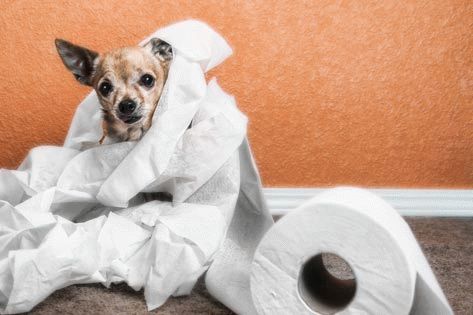
Diarrhea in a dog: what is feces
Normal - your pet's stool is usually slightly moist, regular in shape, and does not have a pronounced strong odor. Usually brown, but not dark in color. If on a walk your four-legged friend piled just such a bunch, then you have nothing to worry about, the dog’s stomach and intestines are working normally. There are some features that are due to the nutrition of the dog. Such a "correct" feces is formed if the dog is not sick and receives the correct, balanced, natural nutrition, that is, eats food prepared by your caring hands. If your pet eats store-bought food, especially dry food, then you may notice a slight anomaly.
The feces will be similar to normal, but there will be much more of it than usual. This strangeness is especially noticeable in dogs of small breeds. Remember that there is nothing wrong with this, but just a feature of nutrition, if you transfer your pet to regular food, then the amount of feces will become normal. Why is this happening? It's very simple, dry food often contains a lot of vegetable fiber, which is completely indigestible by the dog's body, according to studies, modern food contains up to 30% fiber, although 5% can be written on the package. This thing in dogs is not digested and comes out with feces, very often such food can lead to diarrhea in a dog.
Sometimes even in a dog that eats exclusively natural food, feces can be light or even white. Usually it is very small and instead of diarrhea, the dog may experience constipation. In this case, you should not worry, this is the result of feeding the dog food with a high calcium content. There is nothing wrong with this, just reduce the dose of calcium per day for your pet and everything will return to normal.
We have considered those cases when the owner should not worry about the health of his pet, but below we will talk about those cases when you need to sound the alarm. Very often, a signal that something is wrong with the pet is diarrhea or loose stools. Let's look at what it is and a symptom of what disease it can be.
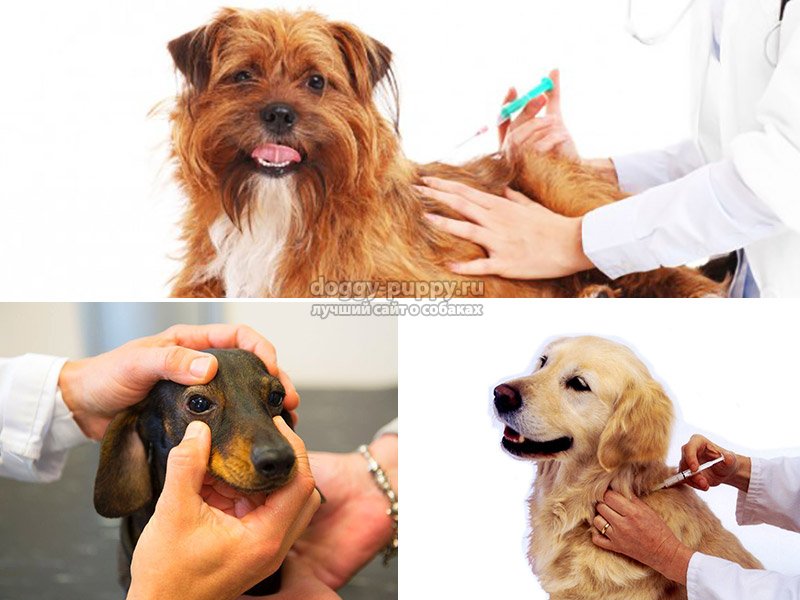
Soft stool without blood and mucus- such a chair is usually not dangerous, it can appear in several cases. Your pet often begs at the table and gets treats. Such feeding can lead to weakening of the intestines. Such a chair may still appear if your pet has switched from one food to another. In general, if your pet has such a chair, then there is nothing to worry about, such a disorder does not require treatment. It usually goes away on its own after a couple of days. If such an anomaly persists for several days in a row, then you should consult a doctor, such a symptom may indicate an infectious disease.
Liquid yellow stool– if such feces in your pet appear within a few days, then this may be a sign of pancreatitis. As you understand, such a disease can be dangerous for your hairy friend and you should consult a doctor. If such feces persist for one or two days, then it does not require treatment, most likely, you just feed your pet too fatty food. The reason for the appearance of such feces may be fatty cottage cheese with a fat content above 5%.

Black stool- such feces can appear in a dog on the background of taking some medications or transferring the dog from one food to another. Black color usually appears when transferring a dog from natural food to dry, but if you transferred the dog, on the contrary, from dry food to natural, then the feces will not be black, but simply dark. If your dog is not taking medication, hasn't switched to another food, and has black stools, it could be a sign of internal bleeding or cancer.
Very liquid stool- such feces can appear in a dog with a fright, an infectious disease. Such diarrhea in a dog is dangerous because the animal's body dehydrates very quickly, such diarrhea in puppies or older dogs is very dangerous. Such diarrhea requires the immediate intervention of a specialist, otherwise you may lose your four-legged friend.
So, we have considered the types of diarrhea in dogs, we have mentioned more than once about visiting a doctor or treating diarrhea in dogs at home, now it's time to talk about the treatment of this disease in more detail.
Treatment for diarrhea in dogs
So, what to do if you notice your pet has problems with the intestines? First of all, do not panic, remember that a dog is also a person, and just like a person, she may have short-term problems with the intestines, because your stool is also not perfect every day, but at the same time you feel fine. So your pet can feel fine. If you know the cause of diarrhea in a dog, then you should not run headlong to the doctor and puzzle him with “your” poop. It’s just that the dog switched to another food, ate sweets or fruits in the garden and it was weakened, it happens. If the dog went to the toilet several times liquid, but at the same time her health is normal, the dog runs, plays, wags its tail and is very happy to see you, then there is no reason to worry either. If the dog has spoken once and behaves differently from usual, lethargic, refuses to eat, the dog has diarrhea and vomiting, this is a clear sign that the dog is seriously ill, and you should immediately contact your veterinarian. In some cases, you should see a doctor right away, such as diarrhea in a puppy or an elderly dog. These comrades dehydrate very quickly and may die.
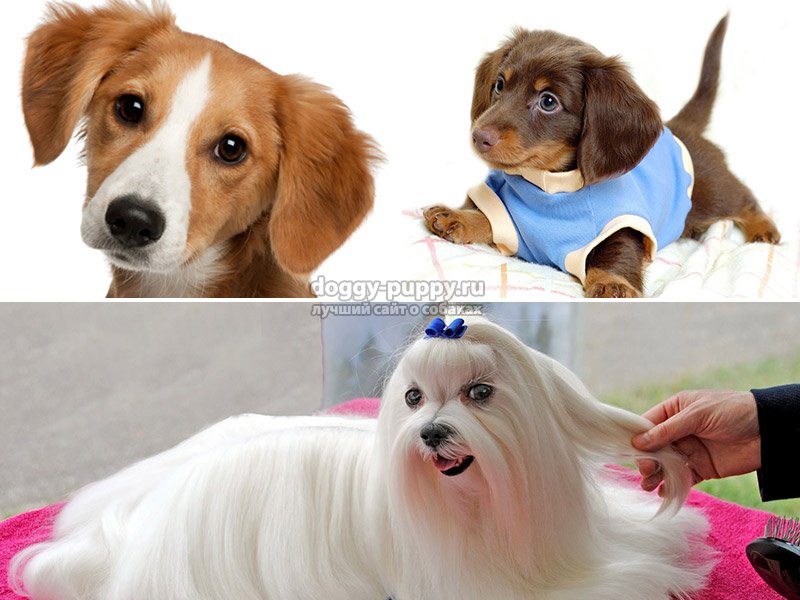
Treating diarrhea in dogs at home
As we have already told you, with prolonged diarrhea in a dog, you should immediately consult a doctor, but what if there is no doctor nearby or it is not possible to call or take your dog to a specialist, but you need to save him? The conclusion is simple - to treat diarrhea in a dog at home. As with humans, dog diarrhea at home is primarily treated with diet. If you have a disorder, then you stop eating and only drink. So the dog should be allowed to drink, but not allowed to eat for at least 12 hours. At this time, the dog can still be given a solution of activated charcoal, the dosage, as in humans, is 1 tablet per 10 kilograms of the pet's weight.
Tablets should be dissolved in water and given to the dog to drink, if the pet refuses to drink this liquid, then you need to pour the solution into his mouth. This is best done with a syringe or syringe in the corner of the dog's mouth, so the pet will swallow everything. In 12 hours, your pet's stool should return to normal, if this happens, then the dog should be fed boiled chicken, beef should not be given. You can add pumpkin to food, but do not give porridge. If the dog's diarrhea does not go away within 72 hours, then it is imperative to invite a doctor, even if the dog behaves normally. It may well be that the dog itself does not even suspect that something is bothering her, for example, there may well be internal bleeding received during a walk, up to a certain point the dog may feel completely normal.
Almost the end
So, as you understand, dog diarrhea is a serious thing, but it’s not always necessary to immediately run to the doctor as soon as your pet messes up a little. It may well be that diarrhea is not associated with health problems at all, but it may be quite the opposite. In general, what I want to say in conclusion of our article is that it is imperative to monitor your pet and pay attention to its condition without fail. No matter how unpleasant it is for you to look at dog poop, but you must do it, it may well be that your attentiveness will save your pet not only health, but also life. Be healthy, have a good chair for you and your petsJ.
Indigestion affects not only mankind, but also the animal world. Often, especially in puppyhood, diarrhea is observed in dogs. If the dog defecates 2-4 times a day, and its feces have a dense structure, then this is considered the norm. When the animal begins to defecate more often, and her stool becomes liquid and watery, then there is excitement. Not many people know what to do in such cases, and some do not pay any attention to it at all.
However, such a careless and inattentive attitude to the health of the pet can cost the baby his life. When diarrhea appears, hope that everything will go away on its own, since the dog ate something wrong, mistakenly, as well as instantly panic, winding itself up dire consequences also not worth it. It is very important to assess the severity of the disease, after which it is already to worry or not. At the slightest violation of the stool in a pet, the owner needs to take urgent measures to improve it!
Causes of malaise
Diarrhea in a dog is manifested as a result of: 
If diarrhea in a dog occurs for the above reasons, then it is necessary to immediately take appropriate measures to treat this ailment. Protracted diarrhea can lead to dehydration and death of the animal.
Forms of the disorder

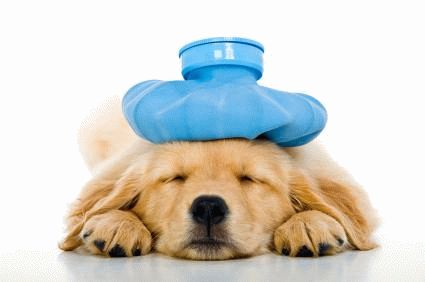 There are several varieties of the form of the disorder, thanks to which it is possible to determine why the dog has diarrhea.
There are several varieties of the form of the disorder, thanks to which it is possible to determine why the dog has diarrhea.
- Acute diarrhea is characterized by the duration of loose stools (2 weeks). In this case, it is very important to monitor if any additional symptoms have appeared in the pet - lethargy, temperature, for example. In their absence, you can be sure that the disorder is caused by poor-quality food, possibly not suitable for this breed. In addition, this form may well manifest itself as a result of the dog's consumption of dairy and fatty products. Such a disorder is very easy to put in order on its own, however, with a negative result (diarrhea did not go away on the 3rd day after treatment or intensified), a visit to the veterinarian is required. It is important to remember that small decorative breeds such as Chihuahuas are very often prone to such a disorder, as they have the most sensitive stomach.
- The second form of acute diarrhea is typical for unvaccinated puppies. It is caused by an infection in the body. various diseases- from enteritis to plague. In addition, poisoning with various poisons and chemicals can also be the cause. With this form, an urgent visit to the veterinarian is necessary.
- Chronic diarrhea is characterized by loose stools lasting more than 2 weeks. This form is manifested as a result of the appearance and development of chronic diseases in a dog. These may include pancreatitis, gastritis, the presence of infection with salmonellosis or dysbacteriosis, the appearance of helminths, and so on.
Varieties of manifestations
My dog has diarrhea - what should I do? It is very important not to let the body get dehydrated, so you should provide the dog with plenty of water, sometimes even force him to drink. It is also possible that it is impossible to force a dog to drink. Then it is necessary to pour water into the oral cavity with a syringe, or use a less dangerous syringe. If the dog has the usual diarrhea in the form of loose stools, then there is a place to be:
- or poisoning
- or beriberi.
Diarrhea and vomiting

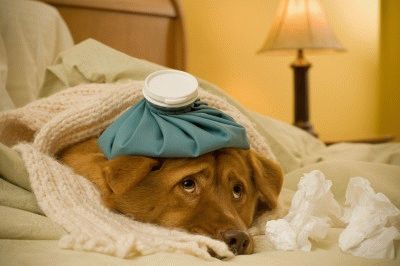
Diarrhea and vomiting in a dog are quite common, which symbolizes the presence of acute poisoning, a non-communicable disease or an infectious one. The greatest danger in such manifestations threatens puppies, since these symptoms may be the result of a viral infection entering their body.
However, one should not draw hasty conclusions, otherwise it is very easy to heal the baby when it turns out that these are manifestations of simple poisoning.
It should be noted several typical diseases characterized by a combination of diarrhea and vomiting:
- Parvovirus enteritis. This disease affects babies aged 2 to 18 months. The duration of symptoms reaches a week, while they are accompanied by a decrease in temperature and refusal to drink and eat. This disease is characterized by high mortality rates.
- Infectious hepatitis/Adenovirosis. In this case, the dog can suffer at any age. The duration of symptoms reaches 2 weeks and is accompanied by an increase in the liver and the development of keratitis, as well as an increase and decrease in temperature.
- Enteritis / corona virus / rota virus. Pets of all ages are also at risk. This disease is characterized by the manifestation of any temperature, as well as a mild course. Symptoms last for one week.
- Worms. Age does not matter, the temperature remains normal, while after feeding you can observe hiccups and gag reflexes, the pet is rapidly losing weight. The duration of the disease is not limited.
Sometimes it happens that the presence of gag reflexes and the rare manifestation of diarrhea are the genetic characteristics of the organism of a certain dog, which inherited this from its ancestors. The absence of other symptoms and signs should suggest that there is no disease and there is no need to treat diarrhea in a dog.
Diarrhea with blood
The most common reason for owners to contact the veterinarian for an upset stomach and intestines is bloody diarrhea in a dog. it the right decision, since the pet needs an urgent examination for the presence of various infections in the body. The fact is that this is already a sign of a serious illness.
- It is possible that the cause of this manifestation of the disorder is the disease salmonellosis.
- In addition, it may well be that the dog, after eating the bones, could damage the walls of the anus with them.
- It is worth noting that hemorrhagic leptospirosis, manifested by bloody diarrhea, is fatal, therefore, at the slightest manifestation of such symptoms, you should immediately contact the veterinary clinic.
- Sometimes diarrhea in a dog with blood is the result of an infection with atypical rabies or infection with sarcosporidiosis.
- The causes of such diarrhea can be chemical poisoning, infection with an infectious disease, a side effect on the use of drugs.
It is worth noting that self-treatment is useless here - an examination by a veterinarian is necessary. Contacting a veterinarian should be immediate. Do not drag out days or weeks, even hours can be critical! Lost time threatens the dog with death.
colored highlights
Other manifestations include yellow diarrhea in a dog or black, the presence of mucus in liquid fecal secretions. Taking care of the health of the dog, you should know what such manifestations symbolize. For example:
- yellowness of diarrhea tells the owner about the development of parvovirus enteritis in the dog;
- the same diagnosis can be made with gray manifestations of loose stools;
- black diarrhea in a dog should suggest a mandatory and urgent visit to the veterinary clinic, followed by an examination, since such manifestations are characteristic of internal bleeding in the intestines;
- distemper is accompanied by loose stools of a characteristic dark green color;
- the whiteness of loose stools indicates an abnormal development of the liver.
Mucus stool
- If the dog has diarrhea with mucus, then infection with parvovirus enteritis is quite likely.
- But this type of diarrhea in a dog also occurs due to a clear violation of the digestive system.
- It is possible that some substance has entered the intestines of the dog, which causes the process of putrefaction.
- Diarrhea with mucus is also the main symptom of some infectious or inflammatory processes.
Treatment of the problem
Treatment for indigestion in a dog depends on two factors - how severe it is and how long it takes. With the short duration of indigestion and its mild form, the owner is quite able to eliminate diarrhea on his own. Of course, that the elimination of diarrhea in a more serious form can be achieved only by eliminating the very disease that caused it.
It is important to remember that self-treatment of acute diarrhea, diarrhea with blood or mucus is prohibited. Folk remedies in this case, they are unlikely to help; full medical intervention is required here.
It is very important to suspend the dog's food intake when loose stools appear. You can first try to skip a few feedings, or you can keep the dog without food for a whole day. What to feed a dog with diarrhea? Here the choice is not large - rice water or boiled rice, as well as sour milk. Very good for disorders helps weak tea in a slightly sweetened form. After treatment, it is not recommended to immediately include heavy food in the diet, and even more so fatty. It is best to keep your pet on fermented milk products and rice porridge for some time.
Many do not know what to give a dog for diarrhea, but there are few options - first of all, activated charcoal. Among other harmless, but very simple and useful remedies, decoctions based on sage and St. John's wort, oak bark, bird cherry, blueberries and pomegranate, and alder stand out. You can insist burnet or serpentine. They have an astringent effect. These funds can be given to a dog if diarrhea lasts no more than 2-3 days, with a longer-term disease, you need to seek qualified treatment from veterinarians. 
Diarrhea in a dog can be triggered either by poisoning or by the appearance of a more serious illness. Dog owners who ignore this ailment in their pet are doing it wrong. In no case should any disease in a dog, including diarrhea, be left to chance.
It is important to remember that this disorder of the digestive system clearly indicates internal problems in the animal's body. It is also important to remember that untimely or inappropriate treatment of the disease can result in negative consequences for the health and life of the dog.
All symptoms of the disease directly depend on the severity and neglect of the disease. Diarrhea symptoms may include the following:

All of the above symptoms can appear as a single presence, and with the presence of several signs.
If at least a single symptom of malaise appears, the dog must be shown to the veterinarian.
Diarrhea with blood
If the animal has diarrhea with various inclusions of blood clots, then this may indicate the presence of a serious disease in the dog's body. As an ambulance, the pet must be immediately shown to the veterinarian. What diseases have this symptom?
- Poisoning. The dog often picks up on the street or in this other place various small items If a foreign body or poor-quality food enters the stomach of an animal and causes severe irritation of the intestinal walls, then the dog develops diarrhea with blood.
- Parvovirus enteritis. mainly present in babies from 2 months to a year. Unfortunately, the disease often leads to the death of a puppy, especially if medical assistance is not provided to the latter in a timely manner.
- Traumatic enterocolitis. Diarrhea with blood in a dog can occur if the animal has eaten a small foreign body, and it has injured the walls of the intestine or stomach inside the body.
- Adverse reflex to taking painkillers.
acute form
In veterinary practice, acute diarrhea is most common in dogs. The disease is characterized by its sudden onset and short-term effect. It is noted that acute diarrhea in dogs does not last more than 3 weeks, but, nevertheless, the disease is serious and requires timely treatment.
The causes of acute diarrhea are identical to ordinary indigestion. Symptoms are manifested in the presence of watery feces, sometimes with impurities of blood.
This condition of the animal is especially dangerous because as a result of frequent defecation, the body can lose a significant amount of fluid, and this leads to dehydration and imbalance in the body.
Chronic form
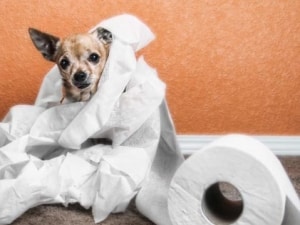 This chronic disease is recognized when the dog has had diarrhea for 3 or more weeks. Feces in chronic diarrhea are often accompanied by mucus and blood.
This chronic disease is recognized when the dog has had diarrhea for 3 or more weeks. Feces in chronic diarrhea are often accompanied by mucus and blood.
With prolonged diarrhea, the dog loses a lot of weight, her appetite deteriorates, the quality of the coat changes, vigor and joy for life disappear.
Causes of diarrhea
A variety of reasons can lead to a violation of normal performance, for example, they include:

Before treating a disease, it is necessary to thoroughly find out the cause of its development. Only after this treatment is prescribed, and urgent measures are taken to heal the dog.
How to treat diarrhea
At the first signs of illness, a sick dog must be taken to a veterinary clinic or call a doctor at home. After identifying the causes of the disease, the veterinarian prescribes medication to the patient.
All of the above medicines can only be prescribed by a veterinarian after a thorough examination of the animal. It is impossible to treat a dog with drugs on its own.
What to give a dog for diarrhea?
At home, you can also help the animal cope with the disease. For this, gentle, harmless, but effective means are used. 
- Rice broth. Boil rice groats in a small amount of water, then the thick is removed, and the resulting broth should be fed to the dog.
- Herbal collections. An infusion of medicinal herbs is being prepared, which the animal is fed with. As medicinal plants, you can use: alder fruits, blueberries, sage, St. John's wort.
Dog food for diarrhea
During the illness, the dog always feels unwell. If she refuses to eat, it is forbidden to force-feed her. Animals need to drink a lot.
What are the rules of nutrition during illness?
- On the first day of illness, it is better for the animal not to give any food at all, if she asks to eat, then you can give a small amount of boiled rice.
- On the second day, the dog can be offered fermented milk products to normalize the digestive process.
- On the third day, if the animal feels better, then low-fat foods are introduced into the diet: boiled egg, chicken or fish. During all 3 days, the dog can be given boiled rice.
It is important not to forget that a sick dog needs plenty of fluids. Plain water, sweet tea, herbal decoctions, rice decoction are suitable as a medicinal liquid.
Prevention
As a preventive measure against diarrhea, pet owners are advised to comply with the following requirements:
We always remain responsible for those we have tamed. This truth is familiar to everyone since childhood. The slightest ailment in an animal should be immediately treated. In order for the dog to be always happy, playful and healthy, she needs only responsible and high-quality care.
Diarrhea is not just a small nuisance. Even when it is not a serious illness, loose stools quickly lead to dehydration and impair the pet's immunity. What provokes diarrhea in a dog, how to treat diarrhea and how to feed a pet during a painful condition?
Unhealthy menu
In most cases, the cause of diarrhea is malnutrition:
- overfeeding;
- unsuitable food;
- food allergy;
- change of diet without a smooth transition;
- fatty, smoked, salted foods, sweets and other goodies in large quantities.
Diarrhea can be either chronic - inappropriate diet, or episodic - treated to ice cream, sausage, etc. The stool in these cases has no impurities or contains fragments of undigested food, a little lighter than usual, without a disgusting smell and is not accompanied by other symptoms of malaise.
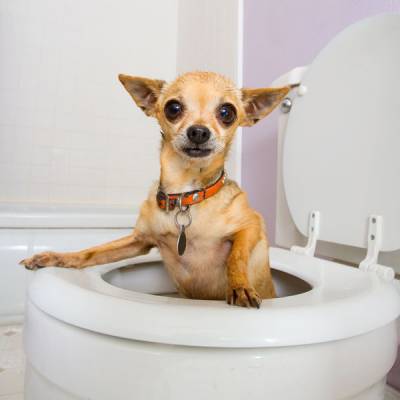
No pills for diarrhea for dogs will help. Rather, they will help, but only symptomatically. For example, imodium, beloved by the owners, will reduce peristalsis: diarrhea seems to pass, but feces will poison the body with toxins, lingering in the intestines due to the absence of the urge to defecate. Therefore, it is better to forget about medications for a while, and try to help your pet with milder means:
- diet for a day, drinking without restrictions. If diarrhea is more than 3 times a day, the dog does not drink, other symptoms appear (vomiting, changes in body temperature, convulsions, weakness) - consult a doctor without delay;
- drinking rice water, strong slightly sweetened tea or decoction of oak bark. In small quantities, 3 times a day.
This is enough to stop diarrhea in a dog, the causes of which are only malnutrition. On the second day, you can feed your pet - in small portions of low-fat, light food. If a piece of sausage is “guilty”, take note of the episode - do not feed your pet goodies from the table. If the diet is generally questionable, consult a veterinarian or make your own seasoned, sparing menu, balanced for a dog's stomach, and not for a human stomach.
Food poisoning
In summer, food quickly deteriorates right in the bowl - left for the night, in the morning the dog ate and got sick. A pet can pick up something on the street, steal a piece from a trash can. , as a rule, vomiting opens, and only then diarrhea - yellowish feces, without impurities or with pieces of undigested food.
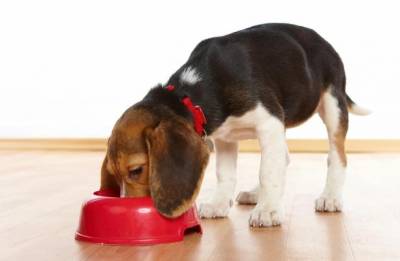
Never scold your pet. It is almost impossible to restrain the urge with diarrhea. And if the dog copes with this task, its health will be harmed - toxins, absorbed into the blood, will poison the entire body, not to mention the liver and kidneys.
If there are no other symptoms, it is enough to give the pet enterosgel or coal (toxins bind), drink plenty of water and do not feed for a day. If the condition does not improve, the veterinarian will tell you what to give the dog for diarrhea in order to gently remove toxins without retaining feces in the intestines. Remember that toxins need to be removed, so any fixing agents can seriously harm your pet's health!
If weakness, changes in temperature and / or color of mucous membranes, convulsions, inhibition of reactions and any other symptoms join vomiting and diarrhea, contact your veterinarian immediately.
Diarrhea with impurities
Various inclusions and impurities in the feces are not a good sign. We strongly recommend that you contact your veterinarian without delay in all cases described below. Sometimes the bill goes literally for hours, do not put off a visit to the clinic until tomorrow.
When DIARRH WITH BLOOD, bleeding in the large intestine is suspected. The blood is clearly visible - scarlet, liquid or clots, for the most part not mixed with feces. There are many reasons, from damage to the intestine by a swallowed foreign body to a decomposed tumor. Bloody diarrhea is possible with enteritis, poisoning, infections, as side effect some medicines. Before you get scared, remember if the dog ate beets yesterday (beets weaken, can stain both feces and urine).
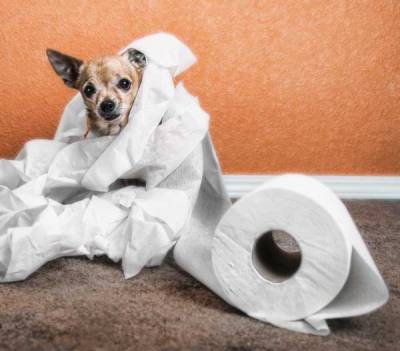
If the DIARRHEA is BLACK, it is also about bleeding, but in the small intestine or in the stomach. The black color of the feces is due to semi-digested blood. The reasons are the same as listed above, plus gastrointestinal diseases. It will not be possible to identify the cause without an examination; an urgent visit to the doctor and a deep diagnosis are necessary. A black decorated chair should alarm no less than black diarrhea. The exception is activated charcoal fed to the dog the day before (the charcoal stains the stool black).
If diarrhea continues for more than a day, and there is no way to see a doctor, do not forget to water the dog. Doesn't drink? Pour water in small portions using a syringe without a needle. Dangerous for your pet's life!
When DIARRH is GREEN, the veterinarian suspects putrefactive / fermentative processes in the intestines (with the release of toxins and their absorption into the blood, as a result - apathy and weakness, poor appetite, fever, stress on the kidneys and liver). Dysbacteriosis, bacterial infections, viruses (plague, enteritis, etc.), stale food poisoning, gastrointestinal diseases, etc. Again, a deep diagnosis is indispensable. If the dog ate a lot of grass or green vegetables the day before, there is no reason to worry (but you should not allow the dog to feast on greenfinch in large quantities in the future).
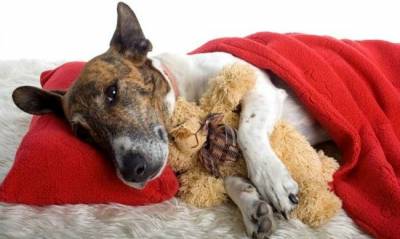
YELLOW DIARRHEA can be a sign of all the diseases listed above - bacterial infections, chronic ailments, poisoning, viruses, etc. The light yellow color of the feces is given by bilirubin, which did not have time to be converted due to the rapid movement of feces through the intestines (normally, bilirubin turns brown, giving the stool its usual shade). Bright yellow or almost orange color - problems with gallbladder, bile ducts or liver.
With diarrhea, the dog can not be fed for up to two days. This is better than loading a weakened body with food that the dog will not be able to digest anyway. As food, offer your pet a slimy rice water with a drop of honey or a little sugar.
When an animal DIARRHEA WITH MUCOUS, suspect damage to the large intestine. There are many reasons, from mechanical damage by coarse food to tumors, inflammatory processes, chronic ailments, poisoning, infections (viruses or bacteria), etc. Sometimes mucus in the stool indicates the presence of helminths. Mucus may appear after anthelmintic therapy - the next day or the day after the dog was given the pill. In this case, a month later, it is recommended to re-dake the drug from worms, for reinsurance.

To help your veterinarian, remember not only the color of the feces, but also:
- consistency. Homogeneous stool, lumps mixed with liquid, like water or like kefir, viscous like syrup or jam;
- smell. Putrid, ordinary, sour, pungent, rotten, unbearably harsh;
- amount compared to normal stool volume. Just a lot / a little - not informative;
- the number of urges and acts of defecation. Does every urge end in a bowel movement or just a part of it? Did the pet go twice a day or five?
- blotches of blood/blackness/greenness or the entire stool is evenly colored. Mucus in separate lumps or is the whole stool made up of mucus?
In order not to waste time, buy a sterile jar at the nearest pharmacy and take some feces with you to the clinic for analysis. Once diagnosed, the veterinarian will prescribe treatment for the cause of the diarrhea, not the diarrhea itself. A competent doctor will tell you about diarrhea and how to avoid this trouble in the future. As a rule, light, low-fat food is recommended - rice plus veal or white fish, or ready-made medicated food. Do not forget that the pet should drink a lot.
Diarrhea in a dog is loose stools that recur repeatedly throughout the day. The stools in this case have a watery consistency, may be black or yellow, have a green tint or blood impurities. Sometimes loose stools in a dog may be accompanied by a high or low temperature, lack of appetite. The pet may feel nauseous and even vomit. Before treating diarrhea in a dog, it is necessary to determine its cause.
Diarrhea in a dog can have a variety of causes and can be caused by a variety of factors. In some cases, diarrhea passes quickly and goes unnoticed by the owner, and in some cases it is accompanied by aggravating symptoms that cause severe discomfort. Improper feeding, helminths, bacteria that disrupt the digestive tract, viruses and fungus - it is important to know the specific causes and direct treatment to eliminate them.
If the dog is vilifying, in order to decide what to do, you need to analyze the situation. It is necessary to understand why diarrhea occurred:
- find out what was included in her food for the last two days;
- remember if she drank water from unfamiliar reservoirs;
- think about whether the pet has interacted with sick dogs;
- check the color of the stool, whether there is blood in them.

Causes of diarrhea in dogs:
- food that has expired or has deteriorated due to improper storage;
- changing natural food to dry food, or vice versa, especially if the food is changed abruptly, without preparing the pet for this;
- food unsuitable for feeding a dog - fatty, spicy, smoked food, dairy products;
- poor quality water;
- a foreign object that could get stuck in the intestines of a dog;
- helminths;
- diseases of a viral or bacterial nature;
- food allergy;
- diseases of the digestive tract, a violation in their work;
- different types of tumors.
Sometimes diarrhea in a dog causes antibiotic treatment, which disrupts the intestinal microflora. It happens that a dog has loose stools when using human drugs or vitamins, due to the inability to correctly calculate their dose.
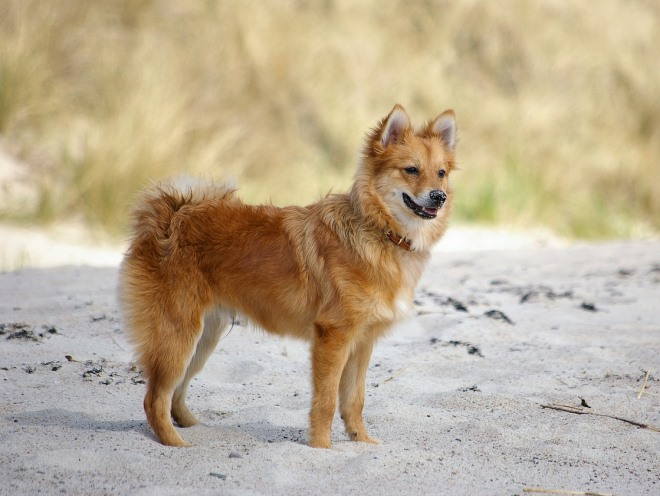
What to look out for with diarrhea
If the animal has diarrhea once or twice and does not recur, then this event should not cause unrest. It is likely that the body did not digest the food, but coped with the situation on its own. In this case, the pet does not need to be given any funds.
What should be suspect in dog diarrhea, and when to worry about how to stop diarrhea in a dog:
- loose stools more than three times a day;
- diarrhea happens once or twice a day, but every day for several days;
- the dog has diarrhea with mucus;
- diarrhea with blood;
- the dog is black or green color stools or feces that are yellow or white;
- there is nausea, the dog vomits;
- high or low temperature;
- lack of appetite;
- refusal of water;
- excessive thirst.
If the above signs are present, the dog’s diarrhea does not stop, then the best thing to do is to contact the veterinarian to determine the exact diagnosis and prescribe treatment.
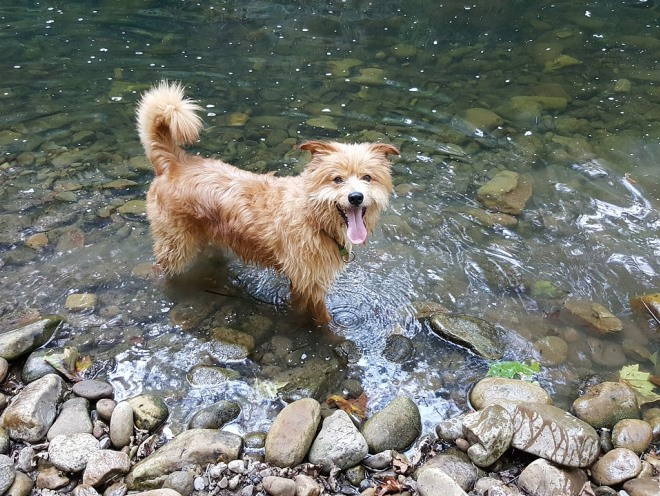
Other diarrhea symptoms indicating serious illness
If the diarrhea has a normal color, the dog does not vomit, then probable cause- violations in feeding. It is enough to return the food to normal, skip one meal or reduce the portion, and the stool will be restored.
If the dog has diarrhea and vomiting, then it is necessary to monitor how often vomiting occurs, whether there is blood in the vomit, and whether there is foam. Possible reason when vomiting and diarrhea occur at the same time - food poisoning, overeating, indigestion of food, a foreign body in any part of the intestine, chemical or drug poisoning, helminths in the intestine.
Diarrhea and vomiting in dogs can also occur with viral infections, such as parvovirus enteritis, coronavirus, rotavirus, adenovirus. In any of these cases, there are additional symptoms of the disease - inflammation of the mucous membranes of the nose and eyes, an increase or decrease in temperature, a complete refusal to eat and drink. If a viral disease is suspected, it is impossible to treat diarrhea in a dog at home - you need to urgently contact a veterinarian so as not to miss the time.
If your pet has diarrhea with blood, the cause of such diarrhea can be very serious. Diarrhea with blood in a dog can be due to a variety of diseases, acute poisoning, or due to a foreign body that has damaged the intestinal wall.
A special word can be said about tubular bones. When the animal chews them, small but sharp fragments are formed, which the dog swallows whole. They are not digested, and the sharp edges severely damage the intestinal walls, and cause bloody diarrhea in the dog.
Other reasons due to which a dog has diarrhea with blood, and sometimes with mucus are tumors, erosions, helminths, acute poisoning with toxic substances. Diarrhea with blood occurs with parvovirus enteritis, salmonellosis, leptospirosis and rabies.
Leptospirosis and rabies pose a serious danger to humans, so it is important to examine a dog that has bloody diarrhea as soon as possible.
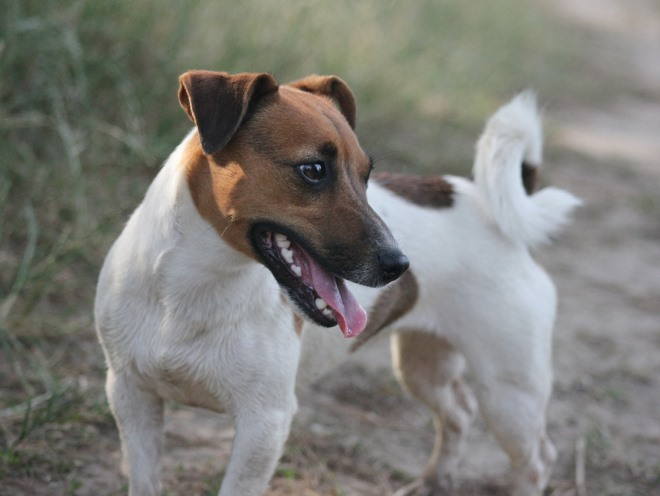
Is it possible to determine the cause of diarrhea by the color of stools
If a pet has yellow diarrhea, then it is possible that he has problems with the liver or gallbladder. Sometimes this color can indicate hepatitis.
Green diarrhea may be due to the intake of spoiled food, which the stomach and intestines do not digest, and the putrefactive process and fermentation begin. In other cases, this color may be due to gallbladder disease or dysbacteriosis.
Black diarrhea indicates bleeding in the upper gastrointestinal tract. Blood in the stomach or duodenum may be due to ulcers, tumors, and mechanical damage.
White stools may indicate a blockage in the bile ducts.
How to treat diarrhea
How to treat diarrhea in a dog can only be said by a veterinarian after an examination and identification of the exact cause.
You can cure diarrhea yourself only when it is caused by malnutrition or poor-quality food. In all other cases, especially if the diarrhea is aggravated by additional symptoms, you need to contact the veterinarian.
What to give your dog for diarrhea:
- The universal remedy for diarrhea is activated charcoal. The dosage of this drug is the same as for humans - 1 tablet per 10 kg of dog weight. It should not be given more than five times a day;
- smecta - the solution is injected behind the cheek with a syringe without a needle;
- herbal infusions - sage, St. John's wort, oak bark. Instead of herbs, you can offer your pet a little weak sweet tea;
- rehydron - if loose stools are frequent, then its solution should be gradually poured into the dog's mouth.
Antidiarrheal tablets for dogs, such as antibiotics and anti-inflammatory drugs, are prescribed by a doctor with an exact dosage for each individual animal. You cannot give these funds on your own - self-medication can aggravate the situation.

Pet diet for diarrhea
If diarrhea is caused by poor diet, what can be done:
- give the dog plenty of water - so there will be no dehydration and lack of electrolytes in the blood. Otherwise, you will have to make droppers with saline;
- at the initial stage of diarrhea, you can skip one or two feedings, you do not need to force feed;
- at first it is better to feed liquid dietary food, giving it in small portions;
- reconsider nutrition, exclude heavy or low-quality food.
What to feed a dog with diarrhea:
- on the first day, drink rice water, and if the pet has an appetite, then you can give a little liquid rice porridge;
- on the second day - give rice porridge in small portions several times a day;
- on the third day, if the diarrhea has stopped, then rice can be cooked in chicken or not strong beef broth;
- in the future, veal, chicken, egg and sour-milk products are gradually introduced.
Prevention
Preventive measures against diarrhea are simple and consist mainly in observing the rules of feeding, timing of vaccinations and deworming.
There are pets who do not know the limits in food. No matter how much you give to such a dog, everything will not be enough for him, and he does not understand that excessive food will harm him. It is worth making it a rule to strictly adhere to the regimen in feeding a pet, and not follow his lead.
It is advisable to divide the daily portion into two or three parts so as not to overload the gastrointestinal tract of the animal. Exclude any fatty, spicy, starchy foods, tubular or boiled bones.
If a pet grabs abandoned food on the street and does not listen to the owner’s prohibition, then it should be taken out for a walk in a muzzle. Toys should be bought only in specialized stores - all rubber and foam rubber items must be removed from its access area.
It is important to carry out deworming within the time specified in the instructions for the drug, follow the vaccination schedule.


